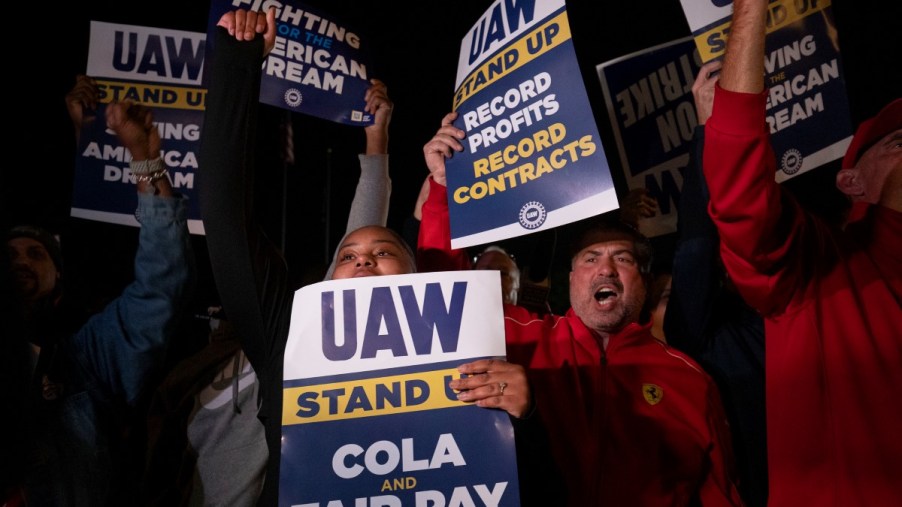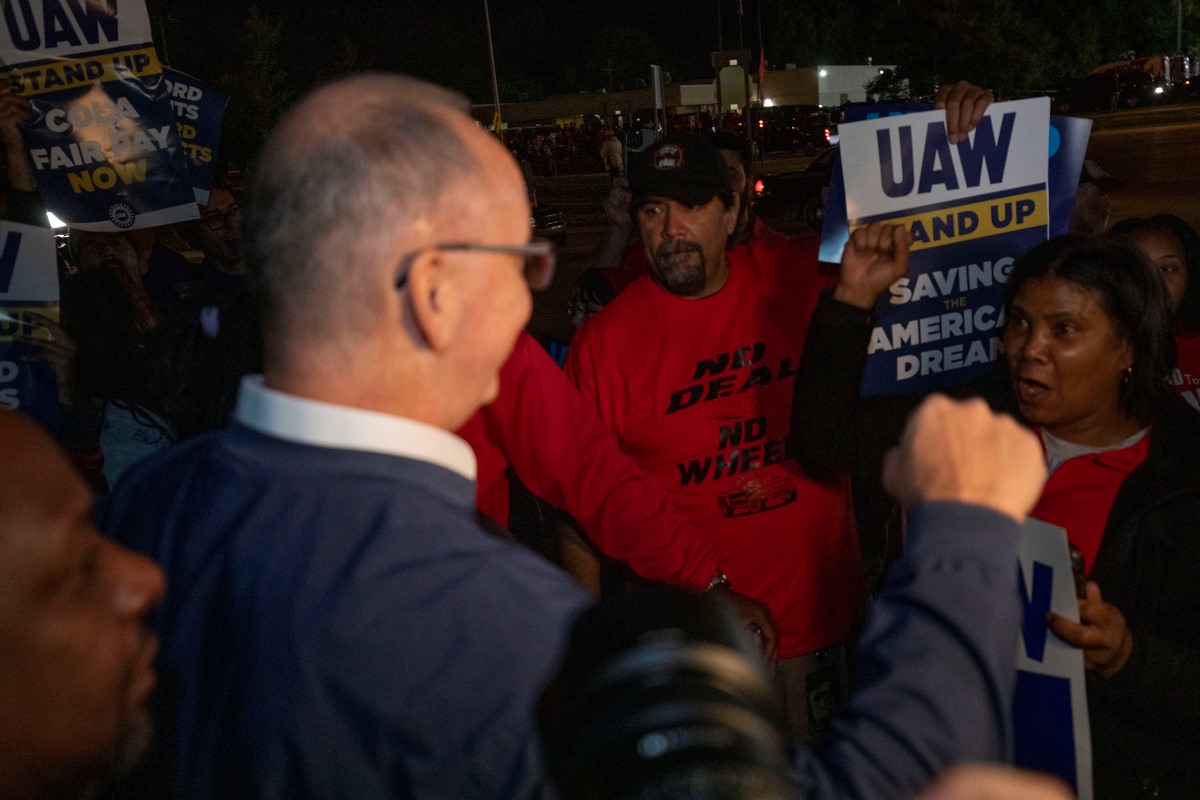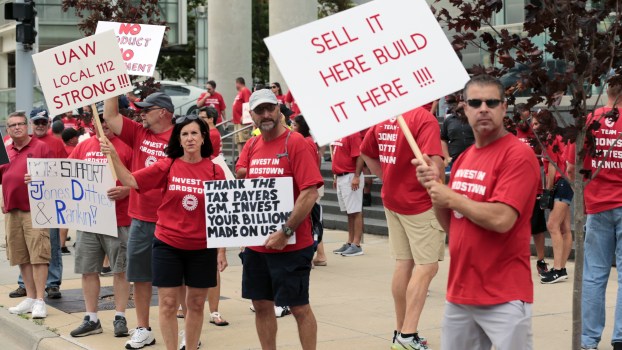
UAW Strike: 13,000 Auto Workers Strike Against Ford, GM, and Stellantis
As of 11:59 pm on September 14th, workers at three automotive assembly plants walked off the job. The strike comes in response to failed negotiations between UAW and Ford, General Motors, and Stellantis, which owns Dodge, Jeep, Ram, Alfa Romeo, and FIAT. The decision to strike against all three corporations simultaneously is part of a unique UAW strategy to gain more leverage over ongoing labor disputes.
How we got here
The auto workers union has been in negotiations with all three major American automakers since late summer. Those tense negotiations have called for improved pay, better paid time off, cost of living wage adjustments, and increased retirement contributions from the big three automakers.
UAW President Shawn Fain released a list of auto workers’ demands, including:
- 40% wage increase over the contract’s duration, pointing to the 40% increase in CEO salaries during the same period
- Restoring the cost-of-living adjustment
- Defined benefits and pension
- Increased benefits to existing UAW retirees
- A reduced work week
- More paid time off
- Eliminating wage tiers
That list went public on August 1st. Six weeks later, UAW workers at three plants ceased work in protest.
Fain indicated that the initial offers from GM and Stellantis fell far short of addressing UAW demands. He then went further, citing the 2009 wage concession in the wake of a faltering economy and subsequent bankruptcy of both companies. Now, he is asking that workers get their “fair share,” citing record profits in recent years.
GM, Ford respond to UAW strike
While Stellantis has been silent thus far, both Ford and GM responded to the UAW strike. Ford’s statement read, in part:
“Ford has bargained in good faith in an effort to avoid a strike, which could have wide-ranging consequences for our business and the economy.”
Meanwhile, GM CEO Mary Barra stated,
“We’ve worked days, nights and weekends since receiving the UAW’s demands. We have been bargaining in good faith to deliver a better package with historic wage increases and manufacturing commitments, recognizing your contributions to our company — past, present, and future. We are working with urgency and have proposed yet another increasingly strong offer with the goal of reaching an agreement tonight. Remember: we had a strike in 2019 and nobody won.”
In speaking with CNN, Barra indicated that GM’s offer included pay raises up to 21%, job security, and improved healthcare.
A historic strike

Regardless of the outcome, the current UAW strike is the most sweeping in nearly a century. Hitting one plant each from Ford, General Motors, and Stellantis is a strategic move designed to send a message, rather than cripple the entire industry.
It’s a move that gives the union significant leverage, as more aggressive strikes are still on the cards. In total, 145,000 UAW members could walk off the job if all involved can’t reach a deal. What’s more, since the UAW negotiates with each of the big three automakers independently, it is possible that some workers get back to work while others remain on strike.
UAW strike: what happens next?
If the big three automakers can’t come to an agreement with the UAW, more workers could walk off the job. Strategically, plants for metal stamping and electronic components would be the most devastating. While only a small percentage of workers are on site, those facilities are critical to the entire process of auto manufacturing. Without them, virtually all production would shut down in a matter of days.




